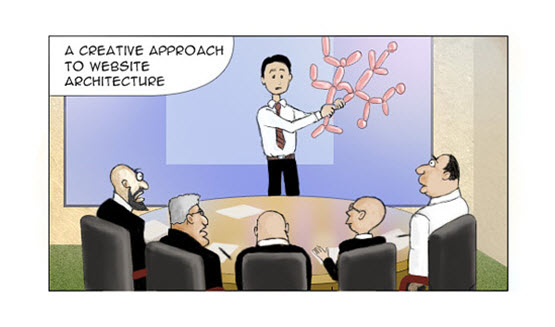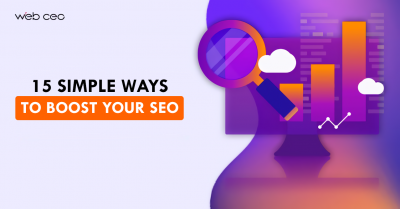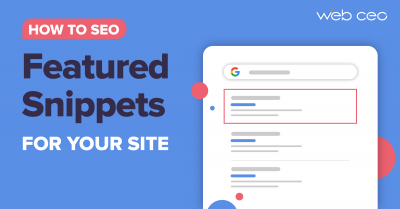
What is the biggest challenge for today’s website owners and digital marketers? It is to keep your target visitors as long as possible on your site and direct them softly to the end point of the conversion funnel that is a call-to-action. To evaluate the rate of visitor engagement you can use the Google Analytics Behavior insights such as the Bounce Rate and Average Time on Page. The higher the bounce rate and the lower the average time on page, the lower the conversion rate is. What is the best SEO technique you can use to improve the score for these SEO variables and make people dive deeper into your website? –Highlighted hyperlinks in the body of pages can bring a reader to other important pages where he can find additional relevant info, then sign up for your service, buy your product, subscribe for a newsletter or leave his contact details. In SEO we call all this internal links map or structure.
What are the types of internal links to use for effective internal links optimization?
Links are the doors that search engine crawlers and users pass to find each of your pages. It fully depends on you to open or close your internal link doors for search engines and your potential clients. A good internal links structure includes a complex system of interlinking on a site that that includes different types of internal links:
- Navigational links serve to put a website’s navigation into a structured order. These can include menu links, sidebar links or breadcrumb links.
- Footer links are often sitewide links that serve as a sitemap and help new users find quick access to the most valuable pages on a site.
- Contextual or editorial links are links located in the body of a page and surrounded by relevant copy.
Editorial links are the most valuable types of internal links from an SEO and user experience perspective. While navigational links are just the static anchors on a site, editorial links are dynamic beacons which help users and search engines drift your website easily from page to page. If properly optimized, internal links are the best SEO technique to establish a website’s theme for better indexing and crawling by search engines and for increasing your landing pages’ ranking power and authority. The most important part in the structure of the internal link is a visible and clickable area of the link which is most often anchor text, the descriptive keyword or phrase that is pasted in the HTML link after the targeted page URL and before the closing link tag.
Here is an example of a perfect, SEO-friendly internal link with properly optimized anchor text:
<a href=”https://www.webceo.com/blog/find-and-neutralize-toxic-links-with-the-web-ceo-backlink-quality-checker/> Web CEO Backlink Quality Check</a>
Here, the anchor text with relevant explanatory long-tail keyword in bold clearly points to the target page.
Here is another example:
<a href=”https://online.webceo.com/?aw=ranker/detailsbyse/>monitor keyword rankings</a>
Here, we use an internal link as the call-to-action that not only describes the target page (which is the page of the tool for tracking site rankings), but induces people to sign up for our service by clicking on the registration page. Being a part of the post, it serves as an organic call-to-action button.
What are the benefits from internal links optimization?
There are several positive effects you can achieve via internal links optimization.
- Make the website easy-to-navigate for new visitors.
- Make the website theme clear in the eyes of the search engines.
- Increase the number of page views.
- Reduce the bounce rate.
- Benefit from visitor responses to organic call-to-actions.
- Spread the link juice throughout your website.
- Internal Links are much more easily controlled and optimized than external backlinks.
What are the best SEO tips to strengthen your internal links structure and spread SE ranking juice all over your website?
- Make sure your internal links are not broken or blocked by the Robots.txt file. To check the accessibility of your internal links, use the Landing Page SEO report of the WebCEO SEO Analysis tool for free.
- Avoid any Java, Flash, IFrames and other plug-ins when building your internal link map.
- Associate (or tie) the most authoritative landing pages with less authoritative ones. Ranking for hundreds of targeted terms within one single page (be it the home page or another top landing page) is a mission: impossible. You are better off mapping targeted keywords on other relevant internal landing pages.
- Diverse the anchor texts of your internal links. With Post-Hummingbird SEO, it is essential to make your content user-friendly and theme-focused. For the most effective optimization of anchor texts of your internal links, use the Internal Links Optimization tool for free (no limitations in the Free Plan).
- Improve the page speed score for the landing pages where your most valuable internal links are displayed. If your site is loading longer than 3-6 sec, this means it may cause a bad user experience. In this case, there is no need to optimize your internal links at all, because people are likely to leave it immediately (or stop trying to load it), especially those who use mobile devices. The page speed score is one of Google’s SEO ranking factors, so proper page speed optimization is a must for the better performance of your landing pages.
- Orchestrate a great mobile user experience on your landing pages. Make your internal links thumb-friendly and easy-to-click without zooming. Starting on April 21, mobile friendliness will be officially added to Google’s ranking algorithm and, if your website is poorly optimized for mobile, don’t expect to keep high rankings. Check your landing pages now for any mobile optimization issues with the Mobile Optimization report from WebCEO. Be prepared for spring.


